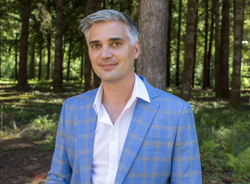The Promise of Gene Therapy
Reprogramming genes to cure HIV may not be easy, but we need to follow the science
By Jeffrey Laurence, M.D.
The latest round of amfAR grants reflects the industry and creativity of researchers exploring a range of gene therapy approaches to curing HIV.
It’s fertile ground. In recent weeks, the Food and Drug Administration has approved gene therapy treatments for conditions including hemophilia A, a deadly type of Duchenne muscular dystrophy, and ALS. Many more are sure to follow. Since CRISPR-Cas9 was first used to edit human genes in 2012, the precision and safety of gene-editing techniques has advanced in leaps and bounds.
amfAR was an early supporter of gene therapy research aimed at curing HIV, launching ICISTEM, a consortium of European researchers building on the science of HIV stem cell transplant cures involving the need to recruit donors having mutations in the critical HIV receptor CCR5, in 2014. That was followed by ARCHE-GT, the amfAR gene therapy research collaboration that is sponsoring Dr. Hildegard Büning’s project.

In addition to the newly funded amfAR grants, former grantee Dr. Jonah Sacha is attempting to redesign the drug candidate leronlimab—a monoclonal antibody that blocks HIV infection via the CCR5 receptor—so that it can be delivered by a viral vector and work as gene therapy. Another team (not funded by amfAR) has launched a first-in-human study testing Excision’s EBT-101, a candidate that cuts out large portions of the HIV genome. And researchers from Temple University and University of Nebraska Medical Center have developed a dual CRISPR gene editing strategy that excises HIV from genomes and inactivates CCR5, in combination with long-acting antiretroviral therapy, to cure HIV-infected mice.
In some cases, especially in the treatment of certain blood cancers, the results of such therapies can seem almost miraculous. Others promise more modest improvements. But in almost all cases, gene therapy-based treatments come with a staggering price tag. The therapy approved in June for Duchenne muscular dystrophy, called Elevidys, is designed to be administered just once at a cost of $3.2 million. The price is typically justified by the estimated savings in treatment costs over a lifetime.
An exorbitantly priced cure for HIV will be of little use to the vast majority of people living with the virus. Recognizing that, amfAR’s priority is to develop a therapy that can be administered in vivo, perhaps through a single injection, avoiding the need for expensive medical infrastructure. Hans-Peter Kiem’s proposal to develop a “portable gene therapy treatment” is a perfect example.
For now, we should put the issue of cost aside and follow the science. “I don’t think expense should deter us,” said amfAR grantee Prof. Sharon Lewin, of the Doherty Institute in Melbourne, in a recent interview. “We’re in the discovery phase right now and we need the scientific advances that are going to cure HIV. We still need that major breakthrough, even if it’s looking expensive and complicated. Then we adapt it, refine it, and make it cheaper.”
Dr. Laurence is amfAR’s senior scientific consultant.
Share This:
